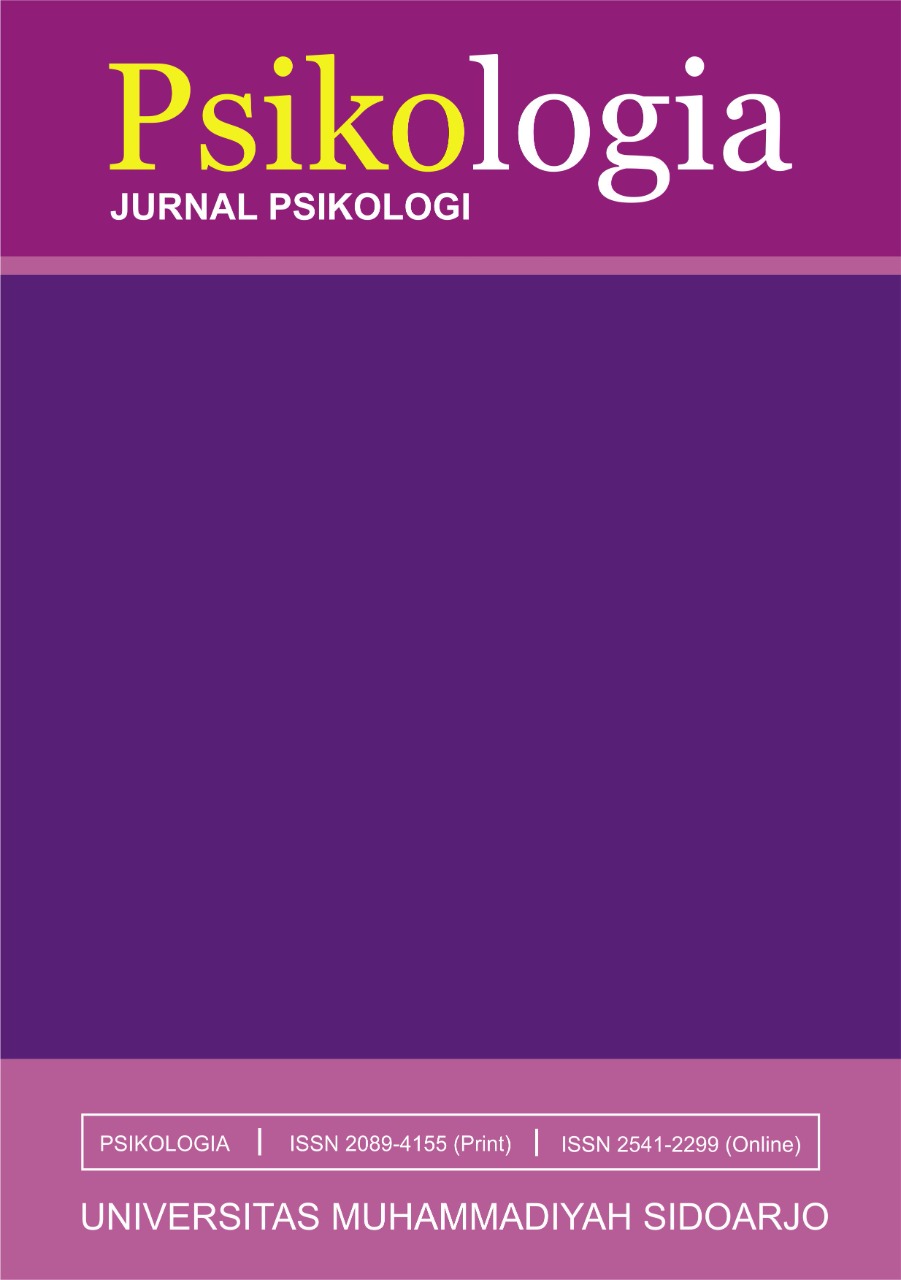Anxiety and Self-Reinforcement in Advanced Semester Students
Kecemasan Dan Self-Reinforcement Pada Mahasiswa Semester Lanjut
DOI:
https://doi.org/10.21070/psikologia.v3i1.109Keywords:
Anxiety, Self-ReinforcementAbstract
Students who have not completed their study within the specified time limit indicated that they have psychological problems during doing the final task that trigger their anxiety. While the anxiety experienced by Students correlated with the frequency of self-reinforcement against them. This study aimed to determine the differences in the level of anxiety in terms of the frequency of self-reinforcement to Students who exceed the time limit. This study used quantitative methods to collect comparative data through the Taylor's Manifest Anxiety Scale instrument and Frequency of Self Reinforcement Questionnaire. The number of subjects were 123 students. The results showed that there were differences in anxiety levels significantly between students who have a high frequency of self-reinforcement tostudents with low frequency of self-reinforcement.
References
Alwisol. (2008). Psikologi kepribadian. Malang: UMM Press
Atkinson, R.L.,Atkinson, R.C., Hilgard, E.R. (2001). Pengantar psikologi. Jilid Dua. Alih Bahasa : Widjaja Kusuma. Batam : Interaksara
Barlow H. D. and Durand M. V. (2006). Essentials of abnormal psychology. Belmont. Thomson Wadsworth.
Boekaerts, M., Pintrich, P. K., Zeidner, M. (eds). (2000). Handbook of self regulation. USA: Elsevier Academic Press
Fischer, J., Corcoran, K. (eds). (2007). Measurement for clinical practice and research: a sourcebook (4th ed, vol 2). USA: Oxford University Press
Laily, N. (2013). Stres pada mahasiswa yang menempuh skripsi. Skripsi (tidak diterbitkan), Universitas Muhammadiyah Malang
Maramis, W.F. (2005). Catatan ilmu kedokteran jiwa. Surabaya: Airlangga University Press.
McDowell, I. (2005). Measuring health: a guide to rating scales and questionnaires. New York: Oxford University Press
Nevid, S., Rathus, S., & Greene, B. (2003). Psikologi abnormal (Ed. kelima jilid I). Jakarta: Erlangga
Pervin, L. A., John, O. P. (2001). Personality: theory and research (8th ed). USA: John Wiley & Sons, Inc
Richard, D. C. S., Huprich, S. K (eds). (2009). Clinical psychology: assessment, treatment, and research. USA: Elsevier Academic Press
Rutherford, R. B., Quinn, M. M., & Mathur, S. R (eds). (2004). Handbook of research in emotional and behavioral disorders. New York: Guilford Press.
Slameto. (2010). Belajar dan faktor-faktor yang mempengaruhinya. Jakarta: Rineka Cipta
Shaffer, D. R. (2009). Social and personality development. USA: Cengange Learning
Suryabrata, Sumadi. (2005). Psikologi Kepribadian (KDT). Jakarta: Raja Grafindo Persada
Wei, M., Mallinckrodt, B., Larson, L. M., Zakalik, R. A. (2005). Adult attachment, depressive symptoms, and validation from self versus others. Journal of Counseling Psychology, 52, 368-377
Winarsunu, T.. (2002). Statistik Dalam Penelitian Psikologi dan Pendidikan. Malang: UMM Press






